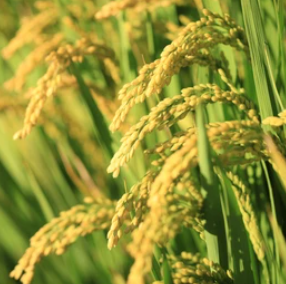Information report for OsCYP2;OsCyp2-P
Gene Details
|

|
Functional Descriptions
- OsCYP2, a chaperone involved in degradation of auxin-responsive proteins, plays crucial roles in rice lateral root initiation.
- Proteomic identification of OsCYP2, a rice cyclophilin that confers salt tolerance in rice (Oryza sativa L.) seedlings when overexpressed.
- Heterologous expression of a salinity and developmentally regulated rice cyclophilin gene (OsCYP2) in E. coli and S. cerevisiae confers tolerance towards multiple abiotic stresses.
- Our results suggest that OsCYP2 participates in auxin signal transduction by interacting with OsSGT1.
- Expression of OsCYP2 enhances the ability of Escherichia coli to survive under diverse abiotic stresses viz.
- Based on these results, we propose that OsCYP2 may serve as a ‘suitable candidate’ for raising transgenic plants for enhanced multiple abiotic stress tolerance.
- OsCYP2 was able to complement the yeast mutant lacking native Cyp2 and also improved the growth of wild type yeast under above-mentioned stress conditions.
- Ectopic expression of OsCyp2-P imparted multiple abiotic stress tolerance to transgenic tobacco plants as evidenced by higher root length, shoot length, chlorophyll content, and K(+)/Na(+) ratio under stress conditions.
- Expression of a cyclophilin OsCyp2-P isolated from a salt-tolerant landrace of rice in tobacco alleviates stress via ion homeostasis and limiting ROS accumulation.
- OsCyp2-P operates via reactive oxygen species (ROS) scavenging and ion homeostasis and thus is a promising candidate gene for enhancing multiple abiotic stress tolerance in crop plants.
- The overall results suggest the explicit role of OsCyp2-P in bestowing multiple abiotic stress tolerance at the whole plant level.
- Publicly available massively parallel signature sequencing (MPSS) and microarray data, besides our quantitative real time PCR (qRT-PCR) data suggest that transcript abundance of OsCyp2-P is regulated under different stress conditions in a developmental and organ specific manner.
- Moreover, knockdown of the OsIAA11 expression partially rescues the LRT2 mutant phenotype in lateral root development.
- To better understand the molecular mechanisms underlying lateral root formation, an auxin-responsive gene OsCYP2 (Os02g0121300) was characterized from rice.
- T2 OsZFP-RNAi lines had significantly fewer lateral roots than did wild-type plants, which suggests a role for OsCYP2 and OsZFP in regulating lateral root development.
- These findings imply that OsCYP2 and OsZFP participate in IAA signal pathways controlling lateral root development.
- Yeast two-hybrid and glutathione S-transferase pull-down results confirmed that OsCYP2 interacted with a C2HC-type zinc finger protein (OsZFP, Os01g0252900) which is located in the rice nucleus.
- In rice, a tryptophan-proline (W-P) cis-trans switch in transcription repressor protein OsIAA11 along with its associated cyclophilin LRT2 are essential components in a negative feedback gene regulation circuit that controls lateral root initiation in response to the plant hormone auxin.
- Here we present NMR studies that determine and independently validate these parameters for LRT2 catalysis of the W-P motif in OsIAA11, providing predictive power for understanding the role of this switch in the auxin-responsive circuit and the resulting lateral rootless phenotype in rice.
- Binding of the transcription factor MYC2-like to the ABRE of the OsCYP2 promoter enhances salt tolerance in Oryza sativa.
Functional Keywords
- lateral-root , seedling , salt , salt-tolerance , salinity , auxin , abiotic-stress , growth , root , shoot , homeostasis , tolerance , stress , development , root-development , iaa , zinc , R-protein , nucleus , IAA , root-initiation , transcription-factor
Literature and News
- LATERAL ROOTLESS2, a cyclophilin protein, regulates lateral root initiation and auxin signaling pathway in rice . DOI: 10.1093/mp/sst052 ; PMID: 23501875
- OsCYP2, a chaperone involved in degradation of auxin-responsive proteins, plays crucial roles in rice lateral root initiation . DOI: 10.1111/tpj.12106 ; PMID: 23289750
- Heterologous expression of a salinity and developmentally regulated rice cyclophilin gene (OsCyp2) in E. coli and S. cerevisiae confers tolerance towards multiple abiotic stresses . DOI: 10.1007/s12033-009-9153-0 ; PMID: 19214808
- Proteomic identification of OsCYP2, a rice cyclophilin that confers salt tolerance in rice (Oryza sativa L.) seedlings when overexpressed . DOI: 10.1186/1471-2229-11-34 ; PMID: 21324151
- Expression of a cyclophilin OsCyp2-P isolated from a salt-tolerant landrace of rice in tobacco alleviates stress via ion homeostasis and limiting ROS accumulation . DOI: 10.1007/s10142-014-0429-5 ; PMID: 25523384
- Peptidyl-prolyl isomerization targets rice Aux/IAAs for proteasomal degradation during auxin signalling . DOI: 10.1038/ncomms8395 ; PMID: 26096057
- A zinc finger protein, interacted with cyclophilin, affects root development via IAA pathway in rice . DOI: 10.1111/jipb.12531 ; PMID: 28267270
- Quantification of reaction cycle parameters for an essential molecular switch in an auxin-responsive transcription circuit in rice . DOI: 10.1073/pnas.1817038116 ; PMID: 30696765
- Binding of the transcription factor MYC2-like to the ABRE of the OsCYP2 promoter enhances salt tolerance in Oryza sativa . DOI: 10.1371/journal.pone.0276075 ; PMID: 36240213
Gene Resources
- UniProt: Q6ZH98
- EMBL: AK061894, AK098919, AP014958
- AlphaFoldDB: Q6ZH98
- EnsemblPlants: Os02t0121300-01
- Gramene: Os02t0121300-01
- KEGG: osa:4328121
- Orthologous matrix: ENFKRTH
- InterPro: IPR002130, IPR020892, IPR024936
- PANTHER: PTHR11071, PTHR11071:SF561
- SUPFAM: SSF50891
- PROSITE: PS00170, PS50072
- Gene3D: 2.40.100.10
- OrthoDB: Q6ZH98
- SWISS-MODEL: Q6ZH98
- Conserved Domain Database: cd01926
- eggNOG: KOG0865
Sequences
cDNA Sequence
- >LOC_Os02g02890.1
TCAGGCCACGCAGCGATCTGAAGTGAAACAGCAAAAAAAATCAAACAAAAAGAAAAAATATTCCCCATCTGTGAAATTCGCAAAACCCTAGCGCGGCGGCGATGTCGAACACGAGGGTGTTCTTCGACATGACCGTCGGCGGAGCTCCGGCGGGGCGGATCGTGATGGAGCTGTACGCGAAGGACGTGCCGCGGACGGCGGAGAACTTCCGCGCGCTCTGCACCGGCGAGAAGGGCGTGGGCAAGAGCGGCAAGCCGCTGCACTACAAGGGGAGCACCTTCCACCGCGTGATCCCGGAGTTCATGTGCCAGGGCGGCGACTTCACCCGCGGCAACGGCACGGGAGGGGAGTCGATCTACGGCGAGAAGTTCGCCGACGAGGTGTTCAAGTTCAAGCACGACAGCCCCGGCATCCTGTCCATGGCGAACGCCGGGCCCAACACTAACGGGTCCCAGTTCTTCATCTGCACCGTGCCCTGCAGCTGGCTGGACGGGAAGCACGTCGTGTTCGGCCGCGTCGTCGAGGGCATGGACGTCGTCAAGGCCATCGAGAAGGTGGGATCCCGCGGCGGGAGCACCGCCAAGCCGGTCGTCATCGCCGACTGCGGCCAGCTCTCCTAGATCTGTGCTGTTCCCCTTCGCCTTTCGCCAGTATCAGTCGTCTTGAGTCGTCGAGTCCCTAAATAAGGAGGAGGTGGTGGTGGTGTTAGTCTTTTTATGAGTTCGTGTCGTGTTGGTGAGATGAGATCGCCCATGGTTTGGTTGGATTAGGCGGAGTTCTTGGATCGATTCGGTGGAGTTGGATCTGCGATCCTTCTTGGGGTTGGTTTTAAATCTTAATTCGTGTCGCTGCTTCTATGATATCGCTATCAATCAATGAGAACATTTGGGATCCGTGGATTTTCTGTGATCTTACACCTGTGTGGTTGTTTGTTCTTGCGACAGTACTAACGTTCTTGCGATTAAAGTAGATTAAACTATCTTCGTGAGATGAGCGGTTTGTCGCCGCGTGATGCCTGACTTTGATGTGATTTGTGGGACTTCGTCTTATCCATTTGGTTATTATTATTTTTTTATTT
CDS Sequence
- >LOC_Os02g02890.1
ATGTCGAACACGAGGGTGTTCTTCGACATGACCGTCGGCGGAGCTCCGGCGGGGCGGATCGTGATGGAGCTGTACGCGAAGGACGTGCCGCGGACGGCGGAGAACTTCCGCGCGCTCTGCACCGGCGAGAAGGGCGTGGGCAAGAGCGGCAAGCCGCTGCACTACAAGGGGAGCACCTTCCACCGCGTGATCCCGGAGTTCATGTGCCAGGGCGGCGACTTCACCCGCGGCAACGGCACGGGAGGGGAGTCGATCTACGGCGAGAAGTTCGCCGACGAGGTGTTCAAGTTCAAGCACGACAGCCCCGGCATCCTGTCCATGGCGAACGCCGGGCCCAACACTAACGGGTCCCAGTTCTTCATCTGCACCGTGCCCTGCAGCTGGCTGGACGGGAAGCACGTCGTGTTCGGCCGCGTCGTCGAGGGCATGGACGTCGTCAAGGCCATCGAGAAGGTGGGATCCCGCGGCGGGAGCACCGCCAAGCCGGTCGTCATCGCCGACTGCGGCCAGCTCTCCTAG
Protein Sequence
- >LOC_Os02g02890.1
MSNTRVFFDMTVGGAPAGRIVMELYAKDVPRTAENFRALCTGEKGVGKSGKPLHYKGSTFHRVIPEFMCQGGDFTRGNGTGGESIYGEKFADEVFKFKHDSPGILSMANAGPNTNGSQFFICTVPCSWLDGKHVVFGRVVEGMDVVKAIEKVGSRGGSTAKPVVIADCGQLS*